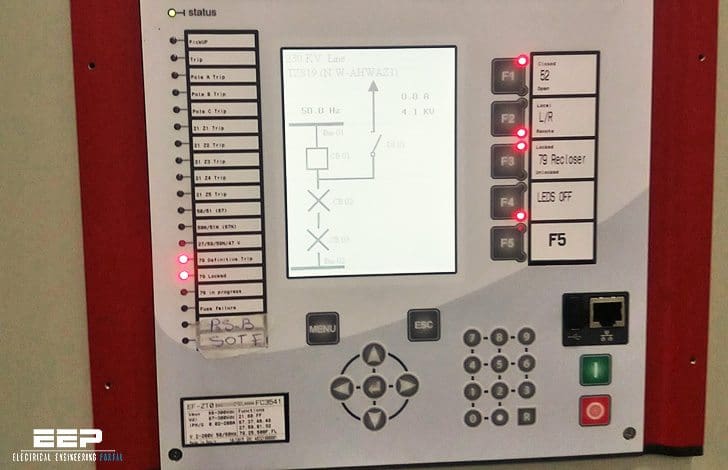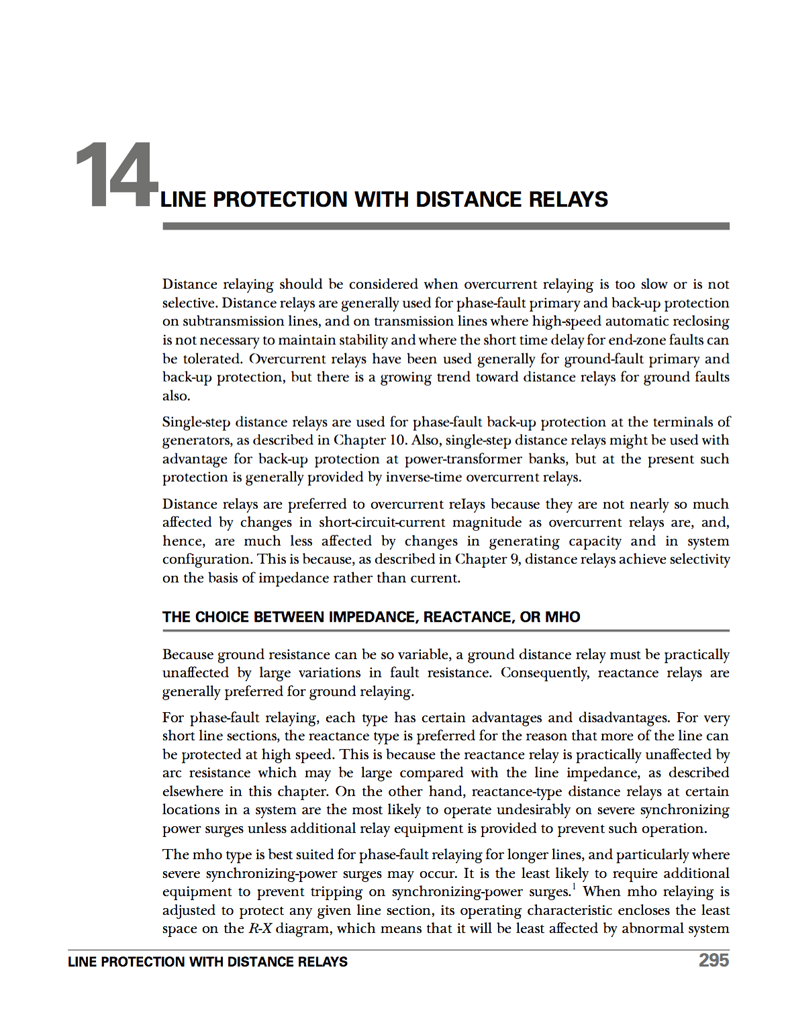Introduction to distance protection
Distance relaying should be considered when overcurrent relaying is too slow or is not selective. Distance relays are generally used for phase-fault primary and back-up protection on subtransmission lines, and on transmission lines where high-speed automatic reclosing is not necessary to maintain stability and where the short time delay for end-zone faults can be tolerated.

Overcurrent relays have been used generally for ground-fault primary and back-up protection, but there is a growing trend toward distance relays for ground faults also.
Single-step distance relays are used for phase-fault back-up protection at the terminals of generators. Also, single-step distance relays might be used with advantage for back-up protection at power-transformer banks, but at the present such protection is generally provided by inverse-time overcurrent relays.
The choice between impedance, reactance or MHO
Because ground resistance can be so variable, a ground distance relay must be practically unaffected by large variations in fault resistance. Consequently, reactance relays are generally preferred for ground relaying.
For phase-fault relaying, each type has certain advantages and disadvantages.
On the other hand, reactance-type distance relays at certain locations in a system are the most likely to operate undesirably on severe synchronizing power surges unless additional relay equipment is provided to prevent such operation.
| Title: | Fundamentals of line protection with distance relays |
| Format: | |
| Size: | 406 KB |
| Pages: | 27 |
| Download: | Right here | Video Courses | Membership | Download Updates |



Anyone having soft copy of numerical distance protection by gerhard ziegler may please share it. Thanks